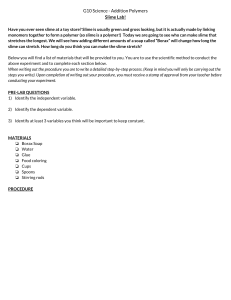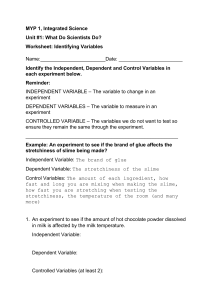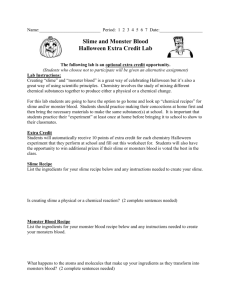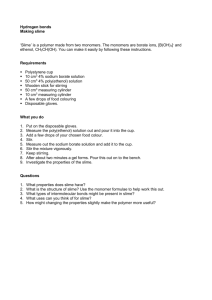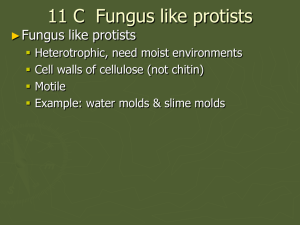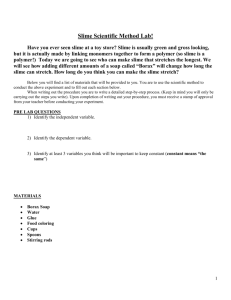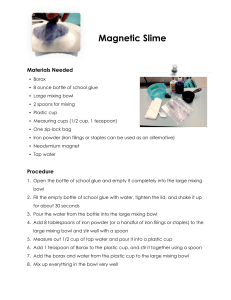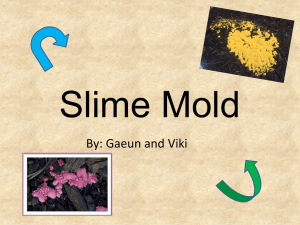The Scientific Method of Inquiry Lab
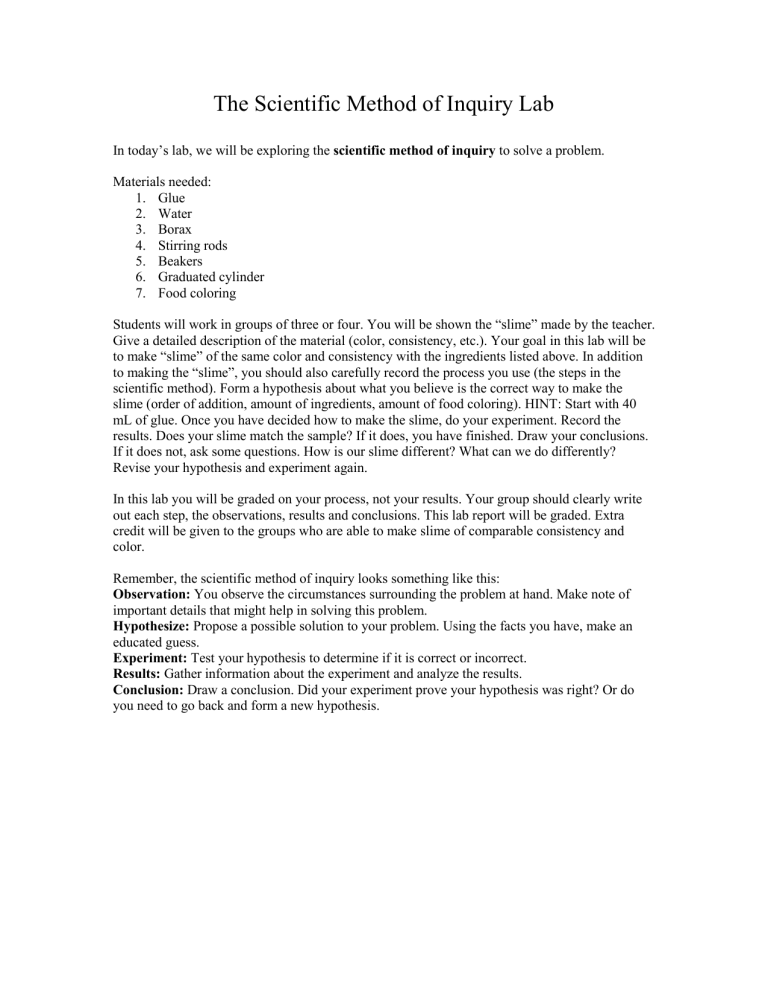
The Scientific Method of Inquiry Lab
In today’s lab, we will be exploring the scientific method of inquiry to solve a problem.
Materials needed:
1.
Glue
2.
Water
3.
Borax
4.
Stirring rods
5.
Beakers
6.
Graduated cylinder
7.
Food coloring
Students will work in groups of three or four. You will be shown the “slime” made by the teacher.
Give a detailed description of the material (color, consistency, etc.). Your goal in this lab will be to make “slime” of the same color and consistency with the ingredients listed above. In addition to making the “slime”, you should also carefully record the process you use (the steps in the scientific method). Form a hypothesis about what you believe is the correct way to make the slime (order of addition, amount of ingredients, amount of food coloring). HINT: Start with 40 mL of glue. Once you have decided how to make the slime, do your experiment. Record the results. Does your slime match the sample? If it does, you have finished. Draw your conclusions.
If it does not, ask some questions. How is our slime different? What can we do differently?
Revise your hypothesis and experiment again.
In this lab you will be graded on your process, not your results. Your group should clearly write out each step, the observations, results and conclusions. This lab report will be graded. Extra credit will be given to the groups who are able to make slime of comparable consistency and color.
Remember, the scientific method of inquiry looks something like this:
Observation: You observe the circumstances surrounding the problem at hand. Make note of important details that might help in solving this problem.
Hypothesize: Propose a possible solution to your problem. Using the facts you have, make an educated guess.
Experiment: Test your hypothesis to determine if it is correct or incorrect.
Results: Gather information about the experiment and analyze the results.
Conclusion: Draw a conclusion. Did your experiment prove your hypothesis was right? Or do you need to go back and form a new hypothesis.

